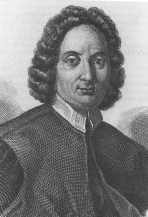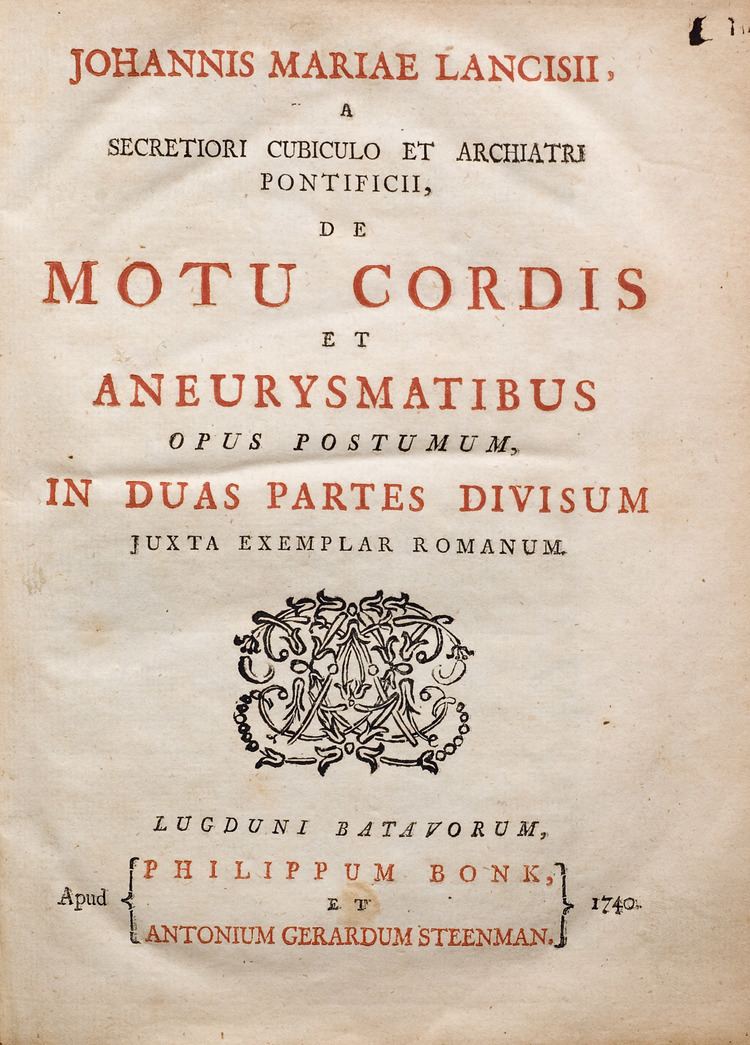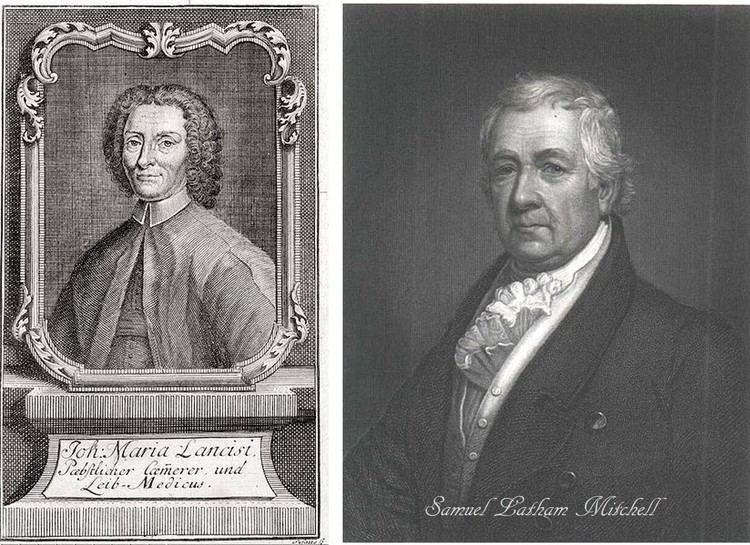Nationality Italy Fields Medicine, Anatomy Role Physician | Name Giovanni Lancisi | |
 | ||
Born 26 October 1654Rome ( 1654-10-26 ) Known for malariacardiovascular diseases Died January 20, 1720, Rome, Italy Books Aneurysms: De Aneurysmatibus, Opus Posthumum, Giovanni Maria Lancisi, 1654-1720 | ||
Giovanni Maria Lancisi (26 October 1654 – 20 January 1720) was an Italian physician, epidemiologist and anatomist who made a correlation between the presence of mosquitoes and the prevalence of malaria. He was also known for his studies about cardiovascular diseases, and is remembered in the eponymous Lancisi's sign.

Biography

Giovanni Maria Lancisi (Latin name: Johannes Maria Lancisius) was educated at the Collegio Romano and the University of Rome, where he qualified in medicine aged 18. He was physician to Popes Innocent XI, Clement XI and Innocent XII. He was given the lost anatomical plates of Bartolomeo Eustachius by Pope Clement XI; these were made in 1562 and had been forgotten in the Vatican Library. Lancisi edited and published them in 1714 as the Tabulae anatomicae. He studied epidemiology, describing malaria and influenza epidemics. He published De Noxiis Paludum Effluviis (On the Noxious Effluvia of Marshes) in 1717, in which he recognized that mosquito-infested swamps are the breeding ground for malaria and recommended drainage of these areas to prevent it. He also published extensively on cardiology, describing vegetations on heart valves, cardiac syphilis, aneurysms and the classification of heart disease. His landmark De Motu Cordis et Aneurysmatibus was published posthumously in 1728.

Early in the 18th century, Lancisi had protested the medieval approaches to containing rinderpest in cattle by famously stating that "it is better to kill all sick and suspect animals, instead of allowing the disease to spread in order to have enough time and the honour to discover a specific treatment that is often searched for without any success" (Mantovani and Zanetti, 1993). It was no wonder then, that it was the same Giovanni Maria Lancisi who made the first breakthrough in the control of rinderpest (Lancisi, 1715), a procedure that was later adopted by Thomas Bates (Bates, 1718).


